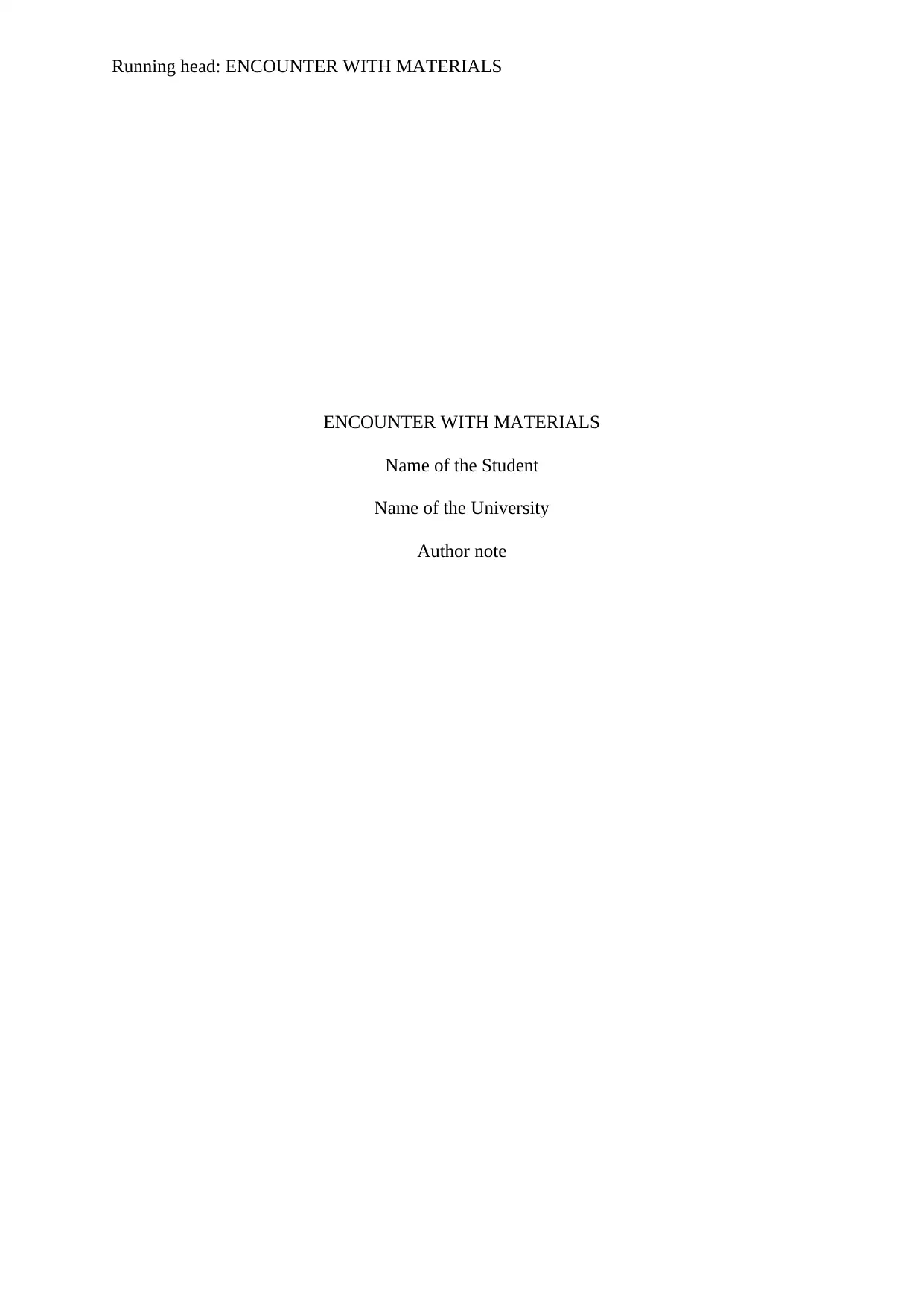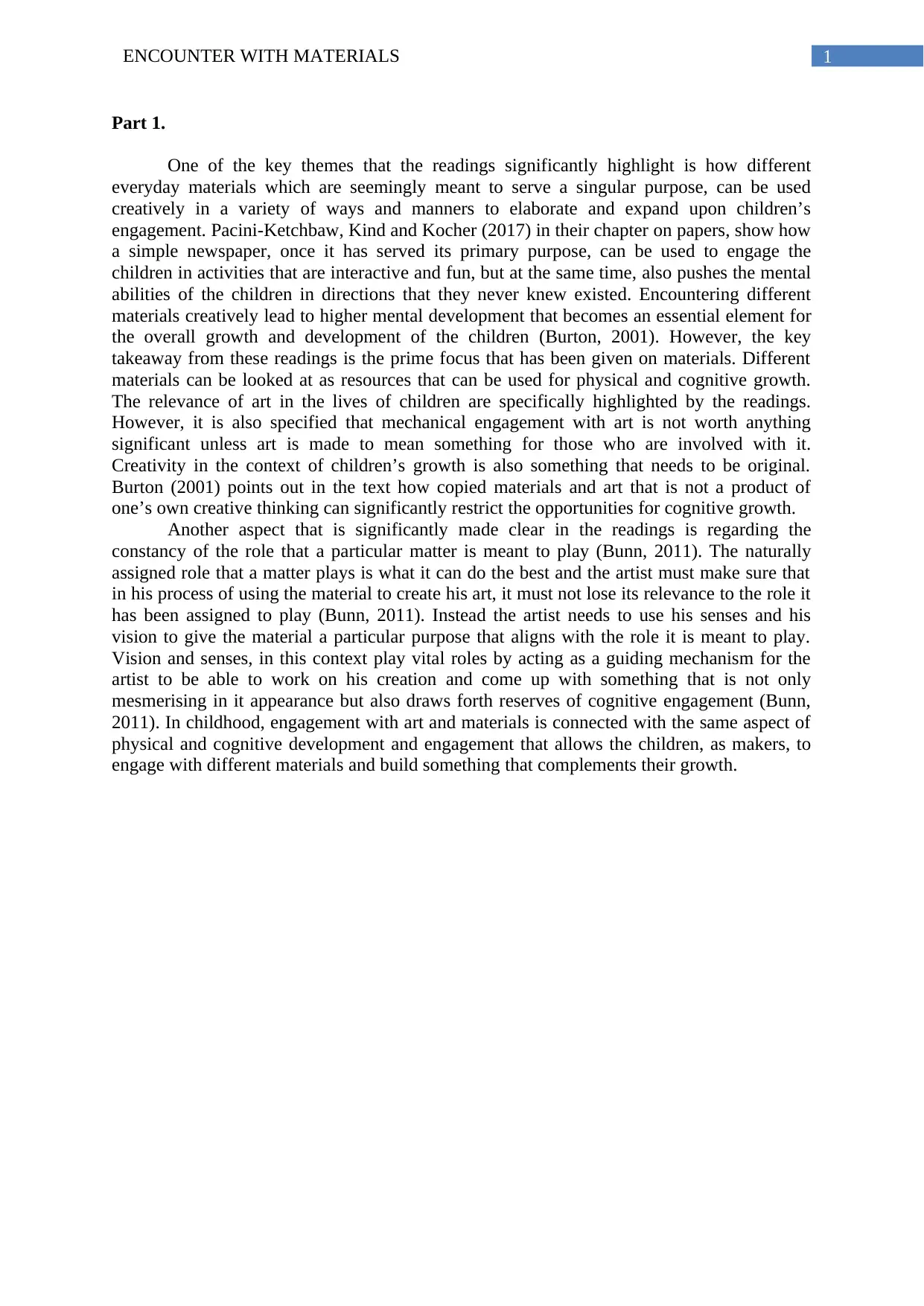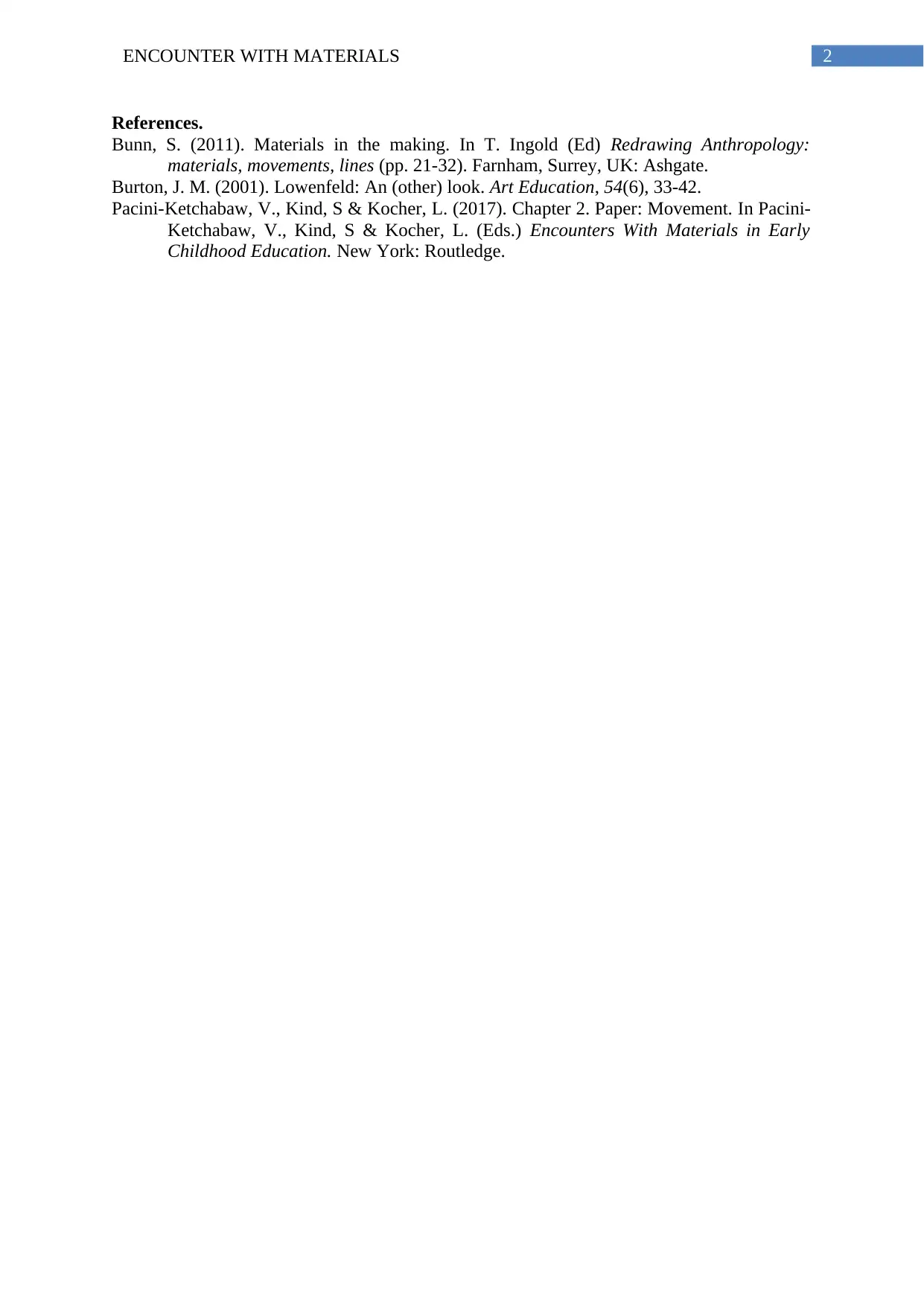Materials Encounter Analysis Report - Course Name, Semester 1
VerifiedAdded on 2022/08/19
|3
|638
|38
Report
AI Summary
This report, titled "Encounter with Materials," analyzes the significance of materials in art and design, particularly within the context of early childhood education. The report highlights how everyday materials, such as paper, can be used creatively to foster children's cognitive and physical development. It emphasizes the importance of original creative thinking and the role of materials in enhancing cognitive abilities. The report references key works by Bunn (2011), Burton (2001), and Pacini-Ketchabaw, Kind & Kocher (2017), discussing how materials should be used to complement their intended purpose while allowing for artistic expression. It stresses the importance of vision and senses in guiding the artistic process, leading to creations that engage both the mind and the senses. The report ultimately argues that the engagement with materials in art is crucial for a child's overall growth and development.
1 out of 3





![[object Object]](/_next/static/media/star-bottom.7253800d.svg)